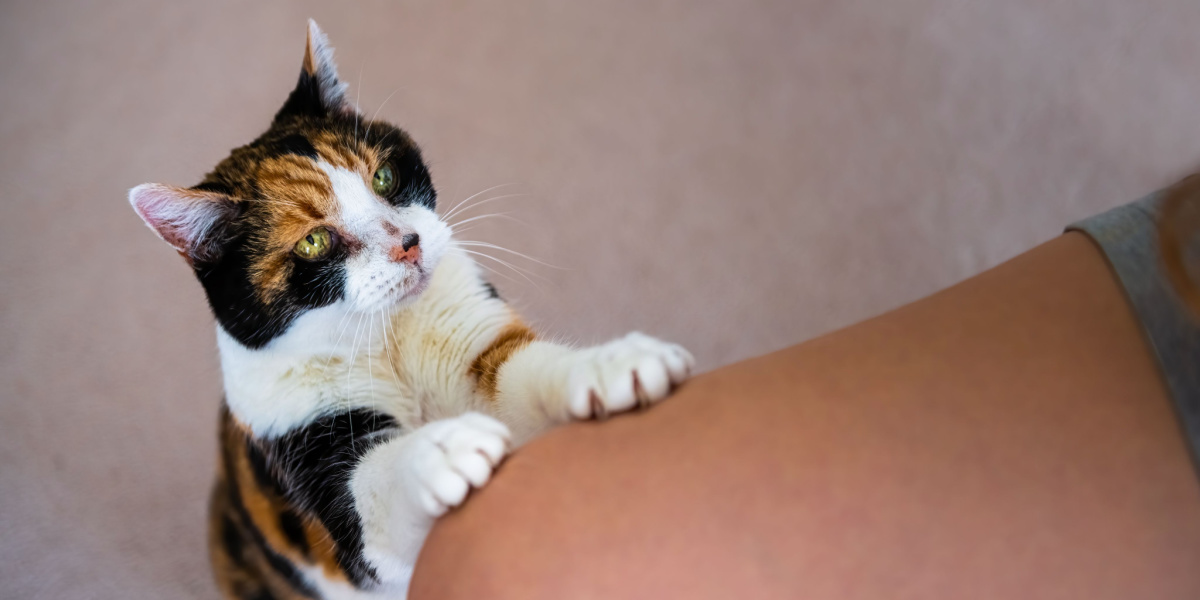
Many cat owners will have experienced it – you are sitting watching the television or reading a book when a cute little paw reaches out and pats you on the arm. You look up to find your adorable kitty staring right at you eagerly awaiting your response, but what do they want?
Or maybe your cat sits on your lap repeatedly pushing their paws in and out of your tummy, and you are curious about the purpose of this odd behavior.
In this article, we will discuss 8 reasons why your cat may be pawing, what you can do to help them, and how to stop them if necessary (after all, sometimes those sharp claws hurt!).
Cats paw for a variety of reasons, including seeking attention, asking for food, and marking their territory. If your cat is rhythmically pawing at a surface (especially a soft surface), they're probably kneading. This is a behavior stemming from kittenhood, indicating feelings of comfort and safety. By paying attention to the way your cat paws at you or other objects, you can interpret this behavior and respond to their needs.Key Takeaways
What Do We Mean by ‘Pawing’?
Cats perform several actions which can be described as pawing. They may simply give you some taps with their feet, or actually pull your arm towards them with more insistent pawing actions.
A specific type of pawing is also known as ‘kneading’, a common feline behavior that involves the repetitive, rhythmic movement of pushing their paws in and out of a soft object, alternating legs as they do it. It is also known as ‘making biscuits’ or ‘kneading dough’ as it resembles these movements.
Most cats knead with their front paws, but some use all four. The claws may be extended and retracted at the same time, cats will often purr, and some cats even start drooling!
Kneading is an instinctive behavior that starts in nursing kittens, where the movement of their paws against their mother’s mammary glands stimulates milk production and flow, but it is a common behavior to see in adult cats too.
Now we have established what pawing is, we will look at some specific examples of why cats might do it, and when it signals that you need to help them:
1. Pawing for Attention and Affection
Contrary to the common stereotype that cats are independent, aloof creatures that don’t love their owners, most cats do form secure bonds with their human companions and enjoy our attention and affection. So your cat may simply be pawing at you to receive some fuss in return.
Not all cats enjoy sitting on people’s laps, so patting you on the arm for attention is a common tactic from kitties that want a fuss, but would rather sit next to you whilst they receive it.
2. Pawing for Food
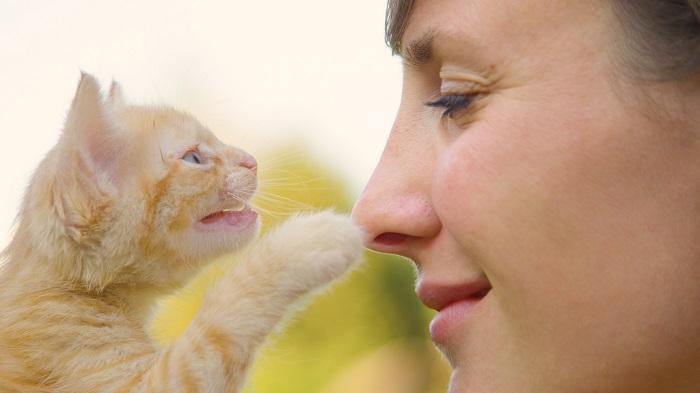
In addition to emotional attention, cats may paw a human to ask for food.
Your cat may be pawing at you because they are hungry. If their tummies are rumbling, they will often get your attention, then run towards the place their cat food is kept, hoping that you will follow and fill up their food bowl.
Obviously, if you have forgotten it’s dinner time, then you’d better get on with dishing up, or it may be that it’s time for a few treats. If their next meal is a long way off, try distracting them with affection, or playing with toys.
Sometimes your cat is pawing at your arm because they want the food you are tucking into. It’s not a good idea to give cats human food as some ingredients (such as chocolate and onions) can be toxic. Giving kitties unsuitable foods, or allowing them to overeat, can also cause obesity.
3. Pawing for Play
Watch the type of pawing your cat is doing – sometimes little playful swats can be a sign your cat would like a game. Keep a selection of toys handy so you can oblige and meet your cat’s needs if this is the case.
Note On Aggression
Sometimes cats can be over-zealous, or outright aggressive when pawing you. Never punish your cat, they will not understand being shouted at or hit and will be scared and distressed. If your cat’s behavior is over-the-top then get up and walk away, and ignore them until they have stopped.
Giving them any kind of attention can reinforce the undesirable behavior, and make it more likely they repeat it. Speak to your veterinarian urgently for further advice if your cat continues to show aggressive or unwanted behavior.
4. Kneading for Comfort
Many people notice their cats knead a soft surface when they are getting themselves comfortable and relaxing, and they often fall asleep afterward. Although kittenhood may be a distant memory, many adult cats may still associate kneading with the comfort of nursing and suckling.
If they choose to do it on your lap, take it as a sign of affection, rather than an insult about your soft stomach! Some cats will knead on sofas, blankets, and beds, often purring away at the same time – you can use pheromone sprays or catnip to encourage your cat to use soft objects rather than your lap if you prefer.
5. Kneading to Scent

In addition to kneading for comfort, cats knead to leave their scent on objects they consider their own.
Cats have scent glands on their cheeks, foreheads, lips, flanks, tails, and paws. These glands secrete pheromones which cats use as a form of communication. Along with using their pee and poop, cats use their scent glands to define territories. Cats rub their scent on each other to reinforce bonds and create familiarity between members of the same group and identify friendly individuals.
Cats see their owners as part of their social group, often rubbing themselves along our legs, or rubbing their heads on us – which spreads their pheromones onto us, claiming us part of their ‘pack’. Cats also have scent glands on their paws – so when they are kneading us, it may be to put their scent onto us and reinforce the social bond.
Kneading can be painful if your cat likes to extend their claws at the same time – cats’ claws are sharp! Rather than shouting at them, or removing them from your lap if they are kneading you, try to facilitate this feline behavior – as we have explained your cat is either trying to comfort itself or reinforce their bond with you.
You could gently pick your cat up and place them back onto your lap with a thick blanket underneath to protect you. Also, consider clipping your cat’s nails if you are confident to (or ask your veterinarian or local groomer to do it for you). Outdoor cats use their claws for climbing and protecting themselves, so should not have their claws routinely clipped.
Note that declawing cats is never acceptable, it involves surgically removing the end of their digits and is unnecessary mutilation.
6. Kneading and Pawing To Make a Bed
Wild cats (our domestic cats’ ancestors) use kneading movements to flatten down tall grass to make areas to sleep, rest and have kittens. Many cats knead and paw at surfaces as they are settling down to rest, ensure they have several beds or blankets to choose from if they enjoy this nesting behavior.
7. Pawing To Stretch Out Muscles
Cats on the whole are very supple and flexible, and often have a big stretch when they wake up from a nap. You may think they are pawing at you, but maybe you just got in the way of a good stretch!
If your cat suddenly stops stretching and pawing or shows signs of being stiff and not being able to jump or climb as normal, they may be suffering from arthritis and should have a check-up with their veterinarian.
8. Pawing as a Sign of Readiness to Mate
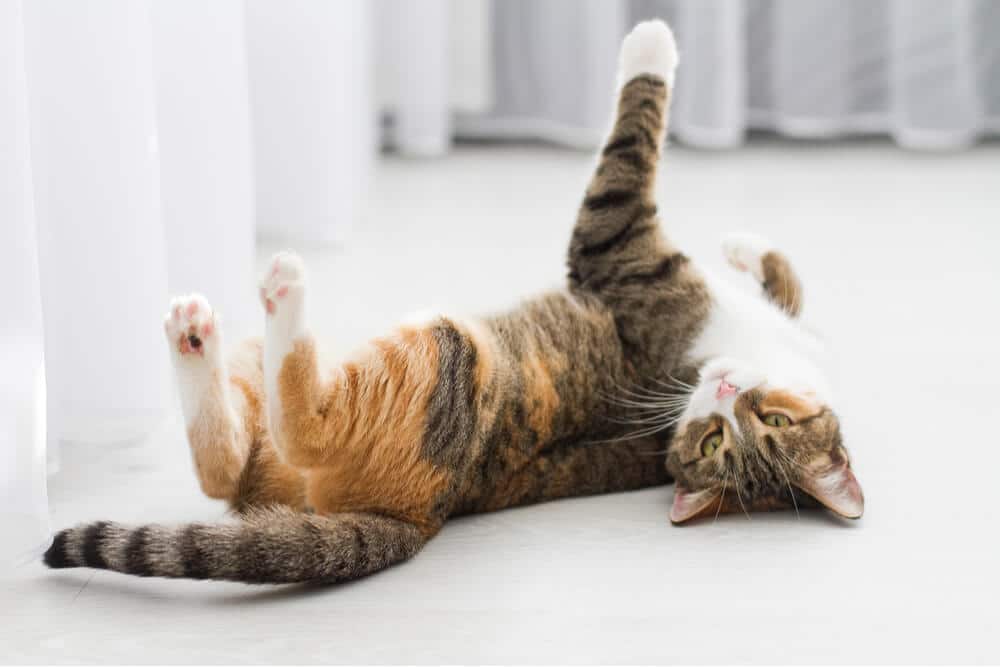
If your cat is an unspayed female, lying on her side while kneading may be a sign that she’s in heat.
Female cats who are ready to mate may indicate this to male cats with the following behaviors:
- Lying on their sides, kneading with their paws
- Holding their hindquarters in the air
- Vocalizing and yowling
- Treading their back legs
- Urine spraying and marking
- Rolling
Unless you have thought carefully about the reality of your cat having kittens, help your female cat by getting her neutered to prevent this behavior from leading to unwanted pregnancies. Mating can also transfer diseases such as Feline Immunodeficiency Virus (FIV) between cats.
Summary
There are several reasons why your kitty may be pawing or kneading, working out why they are doing it means you can respond to them and understand their needs. Pawing can be a way of getting our attention because a cat wants something such as food, or can be the specific action known as kneading.
Kneading is an instinctual behavior that begins in kittenhood, where the repetitive, rhythmic movement of the paws pushing into the mother’s mammary glands helps stimulate milk flow. Some cats continue kneading soft items when they are adults, both as a way of scent marking (as their paws have scent glands) and for comfort.
Usually, all that is needed to help your pawing cat is attention, food, play, or a comfortable lap or bed. It may be that their sharp claws hurt though, and using a blanket to protect your knees, or cutting their claws may be helpful. You should contact your veterinarian if your cat stops pawing or kneading, as it may be a sign of a painful condition such as arthritis.
Also Read: Do Mother Cats Discipline Their Kittens? A Veterinarian Explains
Frequently Asked Questions
Why is my cat pawing at me?
Cats paw at their owners for lots of reasons, it is important to watch exactly what your cat is doing and try to respond to meet their needs. They may give you a tap for attention, food, or because they want to play.
It may be that they settle down on your knee and are kneading (repeatedly pressing their paws in and out of your lap), which can be comforting for cats as it may remind them of suckling as a kitten. Cats' feet have scent glands, so by pawing and kneading you they are also marking you as part of their social group with their scent and pheromones.
Why doesn't my cat knead?
Although many cats retain the instinctive behavior to knead soft surfaces, not all of them do, and it isn't usually anything to worry about if your cat doesn't knead. It may be that your cat was hand-reared, so never developed the behavior of kneading which usually starts when kittens are nursing from their mothers.
Some cats naturally stop the behavior when they reach adulthood and are perfectly content and happy without needing to continue it. However, it could be that your cat is stressed and not relaxed enough to knead, or that they have pain in their legs (such as arthritis), or a painful condition affecting their nails. If you are concerned that your cat could be suffering from any of these things you should get them booked in for a check-up with your veterinarian.
My cat hurts me when they paw at me, what should I do?
Cat's claws are often very sharp, and if they are using them to paw you it can be painful! Indoor cats can have their claws clipped (cats who go outside need their sharp claws for climbing and defending themselves).
If you are not confident to clip your cat's claws yourself then ask your veterinarian or groomer to do it for you. You can also protect your lap with a thick blanket if your cat likes to knead with their claws out, so they still get the comfort and bonding experience of kneading, but without the pain for you!

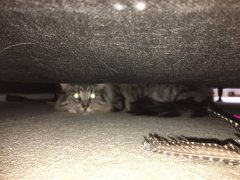
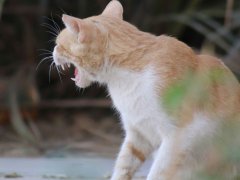





I LOVE CAT PIT 😻 GIRL BABY GIRL GETTING